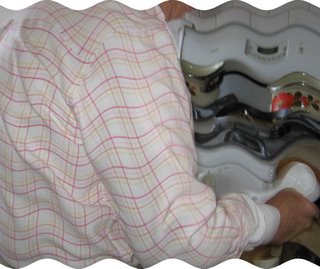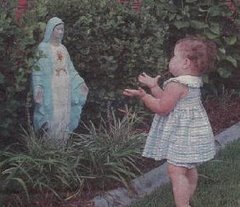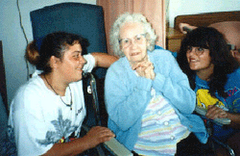Arguably the most beautiful Catholic Church in the Kansas City area is Redemptorist Church, with a capacity of over 2,000 people. It is staffed by Redemptorist priests and the true name is Our Lady of Perpetual Help Church.
The white and glorious main altar is flanked by two similar side altars, plus two other very large end altars with separate railings that are located in the cross-part of the church. The ceiling of the church is awesome, likely stretching to 60 feet or more above the floor. The sanctuary has a white front altar/table that is beautifully carved. Twenty-five magnificent and large stained glass windows rise along the sides and around the back of the sanctuary. A very large crucifix is mounted on a pillar on the right side of the sanctuary.
This is a church which represents the best construction work of prior generations in Kansas City. Fortunately it appears little if any interior art work has been damaged by reconstructionists of the past 40 years. Even most of the beautiful altar rail remains. Flowers were in abundance.
I attended Tuesday 11:00 am devotions to the Mother of Perpetual Help. An estimated 100 or more people attended the Novus Ordo Mass, some in their 30's and 40's, but most above the age of 50. Different races were present, with the majority older Caucasian. Several women wore head coverings and most of the people were dressed up for Mass and the devotions that followed.
The homily on St. Paul ended with the admonition that we have to choose whether we just sit back and "watch, or get into the action" with respect to acting on our faith. Afterwards, two women in their 30s who were scheduled for surgery the next day were anointed with holy oil said to be blessed by Bishop Finn. Their emotions seemed to indicate that their health problems were serious and they appeared to be consoled by their experience. I was surprised to see a weekday collection taken up, but likely the large church has a tremendous heating/cooling bill and needs all the resources it can obtain.
The Mystery of Faith acclamation, as standard practice in the Novus Ordo Mass, referred to Jesus coming again. This has always upset me because the words "Mystery of Faith" are very old and formerly referred to Christ's true presence after the consecration. After the liturgical revolution, the meaning of "Mystery of Faith" was changed to mean Christ's coming at the end of the world--just at the time when he becomes present in our midst.
Two priests distributed Holy Communion to people, mostly in the hand. Some bowed before reception; one genuflected before the Blessed Sacrament. Apparent recorded instrumental music was played during the communion time. After communion, there was a blessing with holy oil given to most of the church attendees who came in long lines to two priests.
Almost all the people stayed after Mass for the devotions to our Mother of Perpetual Help. After devotions, quite a few people stayed to pray in church, remaining in pews, but especially before the crucifix and two large end altars with candles--one of which had a painting of Our Lady of Perpetual Help.
Daily Rome Shot 1521
10 hours ago








